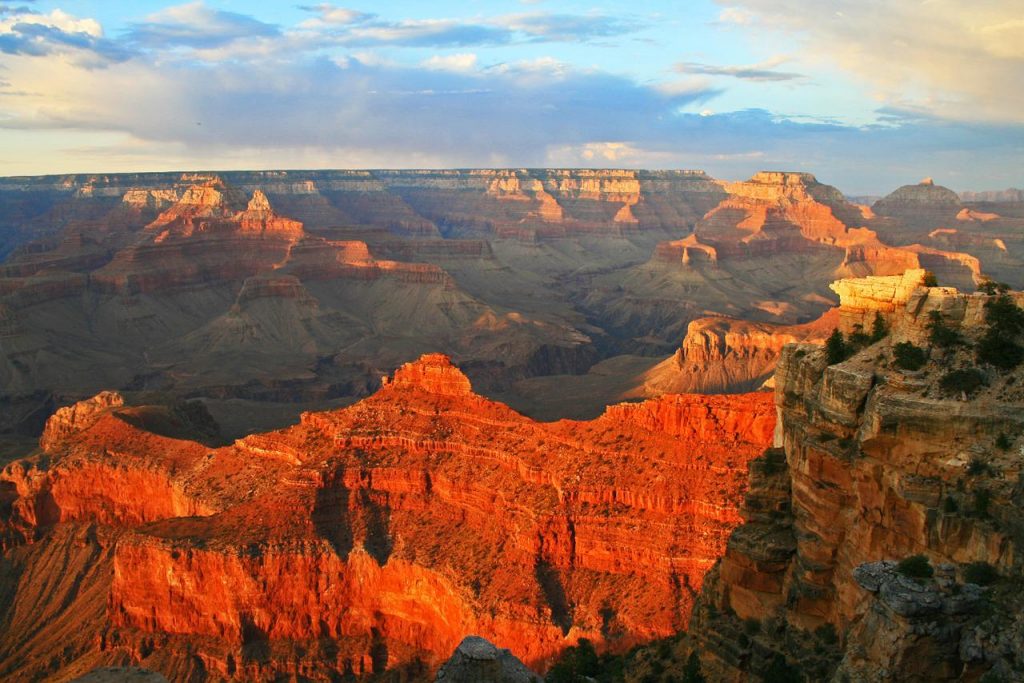Visiting The Grand Canyon Now Will Be Better Than It Has Been In The Past 3 Years, Here’s Why
Havasu Falls, a stunning aquamarine oasis adjacent to the Grand Canyon, will reopen this year after being closed for the past three years due to the pandemic.
This article is more than 2 years old

Havasu Falls is one of the most magical hidden gems in the Grand Canyon, its pure white waters pouring into an impossibly aquamarine pool, a stunning contrast against the surrounding dark orange canyon walls. For the past three years, this beautiful national landmark has been closed to the public. But as with many pandemic closures, 2023 is the year tourists can return.
However, it will still prove difficult to make it to the unique attraction during this calendar year. Havasu Falls is on land owned and controlled by the Havasupai Indian Reservation, adjacent to but not part of Grand Canyon National Park. The tribe has always placed limits on how many people may visit the falls each year, typically opening campground reservations on February 1.
According to CNN, this year’s first reservations were opened to travelers whose trips to this area of the Grand Canyon had been suspended during the pandemic. But because all Havasupai reservations are usually taken within the first few hours of becoming available, no permits remain for 2023. Even so, there is a loophole that might allow you to nab one of the elusive openings to hike to and camp at Havasu Falls.
On the Havasupai Tribe Tourism Facebook page, the tribe says that there is an official transfer list you can sign up for. This list is comprised of people who have paid for reservations but have sold them back because they are unable to travel for some reason. To view the public cancellation/transfer list, you must open an account at www.havasupaireservations.com first.
It’s recommended that you check the cancellation list daily at 8 a.m. Arizona time if you are serious about grabbing an open spot. Reservations are priced per person, but each reservation may include up to 12 travelers. Each reservation must have a designated trip leader and a backup trip leader—one of them must be present with valid ID to check-in, or access will be denied.
Before paying for a reservation, potential Grand Canyon travelers should know that getting to Havasu Falls requires an arduous 20-mile roundtrip hike on steep trails. “It is a rocky and sandy desert trail with a total roundtrip elevation change of nearly one mile. That is TWO Empire State Buildings (meaning it is like climbing down the Empire State Building from the top to the bottom TWICE in a row – and then doing the same thing back up),” the campground reservation page states, adding that you should allow four to six hours for the hike in and five to seven hours for the hike out.
Additionally, hikers and campers must follow strict rules, such as keeping all food, trash, and anything with an odor inside a bear canister. Visitors are not allowed to take photos of Havasupai people or property as a sign of respect for tribal customs. Activities that may be allowed at other Grand Canyon campgrounds—such as lighting campfires or playing music through speakers—are not permitted on the Havasupai reservation.
If you’re physically up to the task, a visit to Havasu Falls will be an unforgettable experience. But whatever you do, don’t plan a vacation to the Grand Canyon and show up at Havasupai without a paid registration—you will not be allowed in. Because the reservation is federal trust land, trespassing violates both tribal and federal law and leaves you punishable both civilly and criminally.





